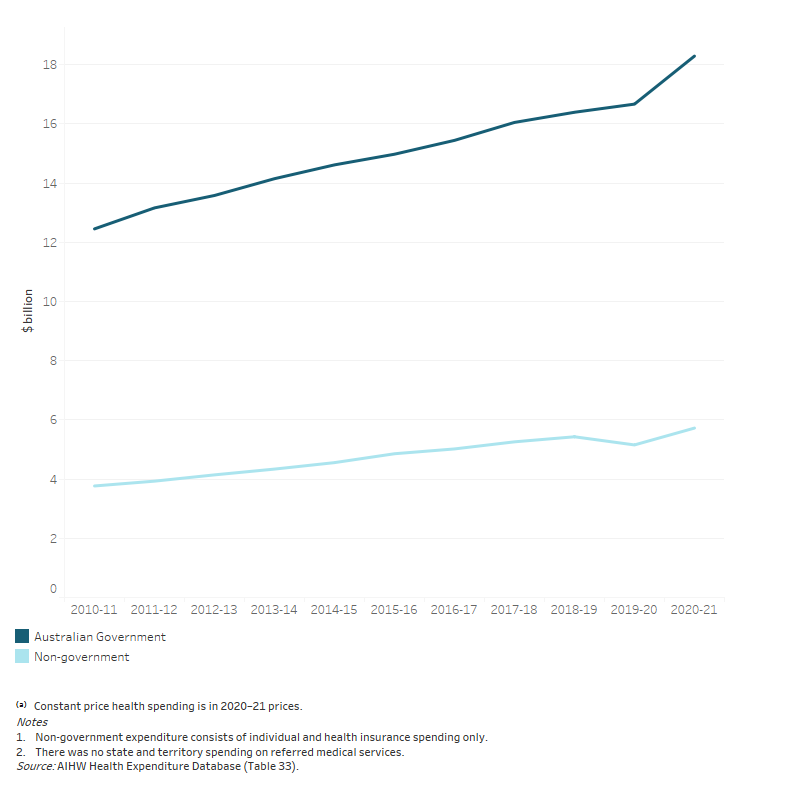Referred medical services
During 2020–21, $24.0 billion was spent on services where a person had been referred by a general practitioner or medical specialist to another non-hospital specialist or allied health professional (this includes services provided in hospitals as discussed in earlier sections of this report). Three in every four dollars were funded by the Australian Government (76.2%, or $18.3 billion) mainly through the MBS, and the remainder by non‑government entities (23.8%, or $5.7 billion). State and territory governments do not contribute funding to this area (Figure 28).
Figure 28: Spending on referred medical services, by source of funds, constant prices(a), 2010–11 to 2020–21
The line graph shows that spending on referred medical services by both Australian Government and non-government sector over the decade to 2020–21. Australian Government spending was highest, increasing from $12.5 billion in 2010–11 to $18.3 billion in 2020–21. Non-government spending increased from $3.8 billion in 2010–11 to $5.4 billion in 2018–19, then declined to $5.2 billion in 2019–20 before increased again to $5.7 billion in 2020–21.

In 2020–21, spending on referred medical services increased in real terms by 10.0%, after experiencing no growth in 2019–20. Spending by the Australian Government increased by 9.7% ($1.6 billion) while non-government entities increased by 11.0% ($0.6 billion) in 2020–21.
Over the decade, referred medical expenses increased by an average of 4.0% each year. This was as a result of 3.9% average annual growth by the Australian Government and 4.3% by non-government funding.
Note that when the full in-hospital MBS spending has been allocated to public and private hospital areas in future reports, the spending on referred medical services will be potentially reduced to $20.7 billion (for Australian Government, Private health insurance providers, and Individuals). More details are available in MBS in hospitals in the Australian Government spending section.


